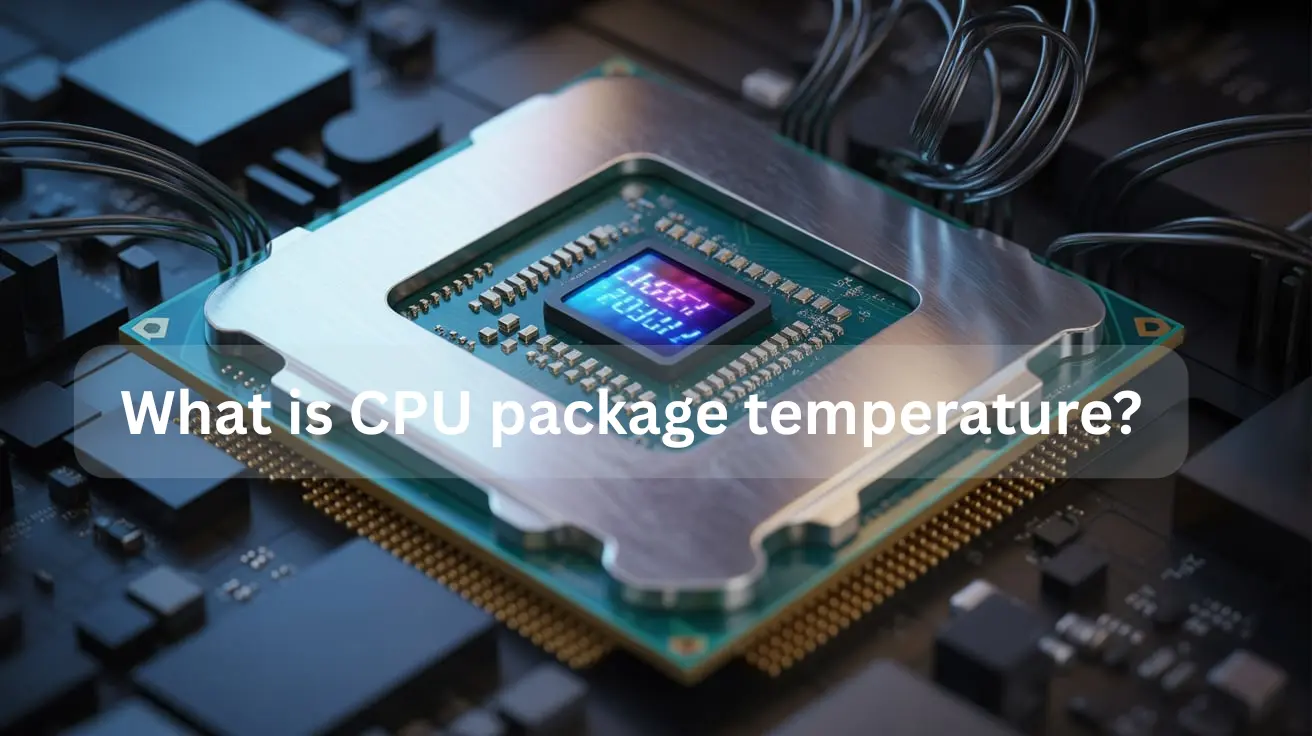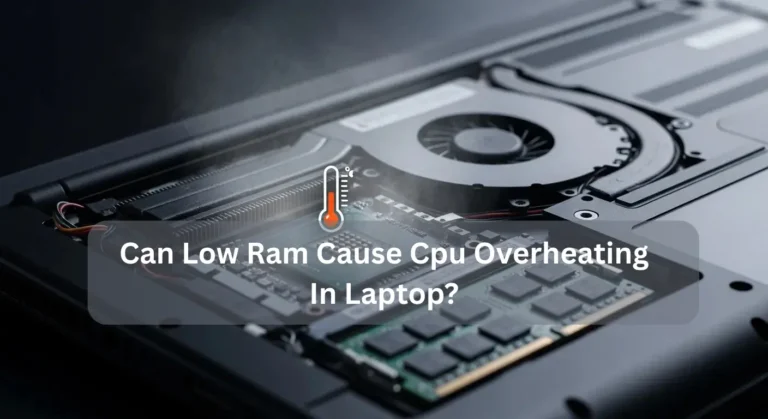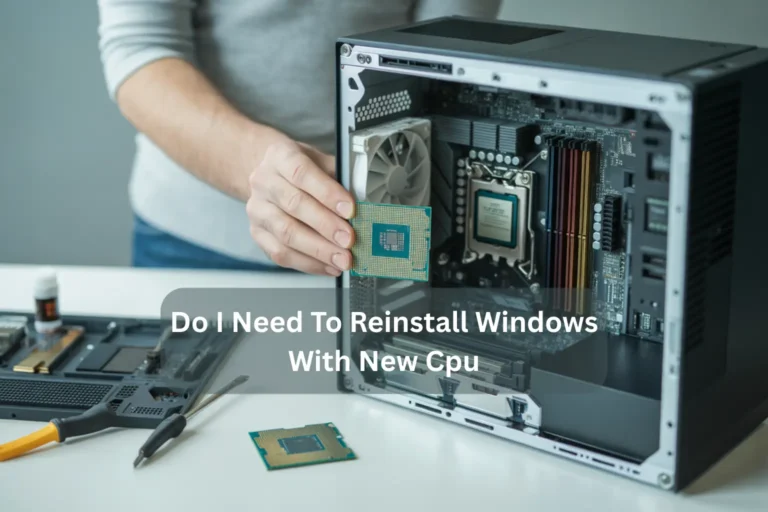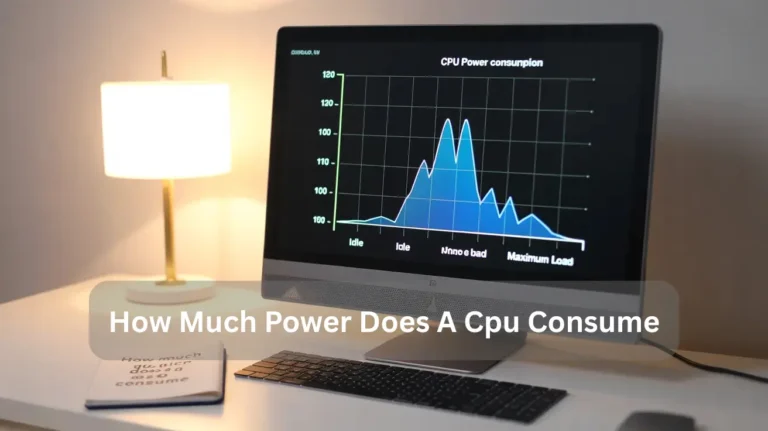What’s a Safe CPU Package Temp? 2025 Guide!
A safe CPU package temperature is usually between 40°C and 80°C during everyday use. Under heavy load, short peaks up to 90°C are fine, but try to keep it lower with good cooling, clean fans, and proper airflow for long life. This article will examine why monitoring the CPU package temperature is essential for achieving…
A safe CPU package temperature is usually between 40°C and 80°C during everyday use. Under heavy load, short peaks up to 90°C are fine, but try to keep it lower with good cooling, clean fans, and proper airflow for long life.
This article will examine why monitoring the CPU package temperature is essential for achieving optimal performance and preventing potential damage.
Why Regularly Monitor CPU Temperature for Optimal System Health:
Regularly checking your CPU temperature is essential for maintaining smooth computer operation. Overheating can cause severe damage to your system’s hardware, resulting in issues such as performance drops, slowdowns, or unexpected crashes. By monitoring your CPU package temperature, you can prevent damage, extend the life of your system, and keep it performing efficiently.
Key Benefits of Monitoring CPU Temperature:
- Prevents Overheating: Regular checks help you catch overheating early, preventing permanent damage to your CPU and other components.
- Improves Performance: Keeping your CPU within safe thermal limits ensures optimal performance, avoiding slowdowns caused by thermal throttling.
- Extends System Lifespan: Preventing high temperatures reduces the risk of long-term hardware degradation, especially for your processor and motherboard.
- Avoids Crashes: By monitoring your CPU temperature, you can prevent sudden shutdowns that may occur when the processor overheats.
- Ensures Stability: Regular monitoring helps maintain overall system stability, ensuring your PC runs smoothly even during heavy workloads or while running demanding applications.
By regularly monitoring your CPU core temperature, you can optimize cooling efficiency and ensure your system performs at its optimal level. Simple steps, such as using proper thermal paste, providing good airflow, and having an adequate cooling solution, are key to keeping your CPU within a safe temperature range.
Typical Gaming Temperatures in the U.S.
A gaming PC in a U.S. room around 75 °F (24 °C) usually runs:
- Idle: 35 °C / 95 °F
- Gaming: 65 & 80 °C / 149 & 176 °F
- Rendering: Up to 85 °C / 185 °F
If your rig is in a warmer state like Texas or Florida, expect 5- 10 °C higher temperatures.
Best Tools to Monitor CPU Temp:
| Tool | Platform | Highlights |
| HWMonitor | Windows | Lightweight, accurate |
| NZXT CAM | Windows | Visual dashboard for gamers |
| Core Temp | Windows | Tiny but powerful |
| AMD Ryzen Master / Intel XTU | OEM Tools | For fine-tuning & overclock monitoring |
Also Read: is More Cpu Cores Better For Video Editing?
How High CPU Temperature Impacts System Performance:
High CPU temperature reduces performance by triggering thermal throttling, which lowers clock speeds to prevent damage. This can cause lag, slow responsiveness, and potential crashes. Utilizing efficient cooling solutions, such as high-quality fans or thermal paste, helps maintain stable performance and extend the CPU’s lifespan.
The Impact of Overclocking on CPU Package Temperature:
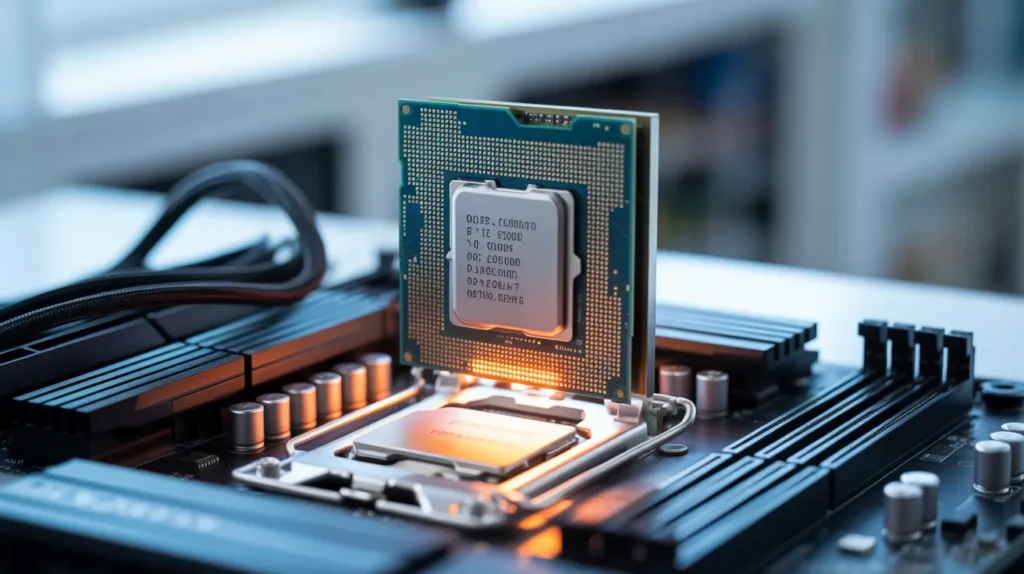
Overclocking your CPU can dramatically boost performance, but it also leads to significant changes in the CPU temperature. Here’s a breakdown of how overclocking impacts CPU thermal performance:
Increased Power Demand and Heat Output:
When you overclock your CPU, it consumes more power to achieve higher clock speeds. This leads to increased energy use, which in turn raises the CPU package temperature. The more you overclock, the more heat is generated, making it essential to manage the temperature effectively.
Overheating Risks and Thermal Throttling:
Overclocking generates extra heat, which can cause the CPU to exceed safe operating limits. When this happens, thermal throttling automatically lowers clock speeds to prevent damage. While it protects the hardware, it also reduces the performance gains from overclocking.
Cooling Systems: A Necessity for Safe Overclocking:
Proper cooling is crucial to maintain the stability of overclocked CPUs and prevent overheating. Stock coolers often fall short, so using liquid or high-performance air cooling, along with quality thermal paste, helps maintain safe temperatures and ensures long-term stability.
Long-Term Hardware Damage:
Running an overclocked CPU at high temperatures without proper cooling can shorten its lifespan and degrade performance. Regular temperature monitoring is essential to avoid long-term damage.
Temperature Monitoring Tools:
To prevent overheating, use tools such as HWMonitor, CoreTemp, or Process Explorer. These tools help you monitor your CPU’s temperature in real-time. Monitoring enables you to ensure that your CPU stays within safe thermal limits, preventing crashes and damage during overclocking.
While overclocking can enhance your CPU’s performance, it generates more heat, which can cause issues such as thermal throttling and hardware damage if not properly managed. A reliable cooling system and consistent temperature monitoring are essential for safe and effective overclocking. Without these, you risk lowering your CPU’s lifespan or causing instability in your system.
The Difference Between CPU Core Temp and CPU Package Temp:
CPU Core Temp:
CPU Core Temp refers to the temperature of each core within the processor. Each core can have a different temperature depending on the workload it’s handling. Monitoring CPU Core Temp helps identify overheating or performance issues on specific cores.
CPU Package Temp:
CPU Package Temp shows the overall temperature of the processor, including all cores and components. It’s usually higher than individual core temps and helps gauge overall heat and cooling efficiency. While core temperatures show per-core details, package temperature reflects the total thermal load & both are key for effective cooling management.
Is 80°C Safe for CPU Package Temperature?
An 80°C CPU temperature can be safe, but it’s on the higher end of the safe range. It’s crucial to monitor the CPU temperature regularly to prevent overheating. Ensure your CPU cooling system is working efficiently. If your workload is heavy, such as overclocking, your CPU may become hotter. Thermal paste and ambient temperature both play a role in determining cooling performance. If your CPU consistently experiences thermal throttling, it may indicate a need for improved cooling.
What is a normal CPU package temperature while gaming?
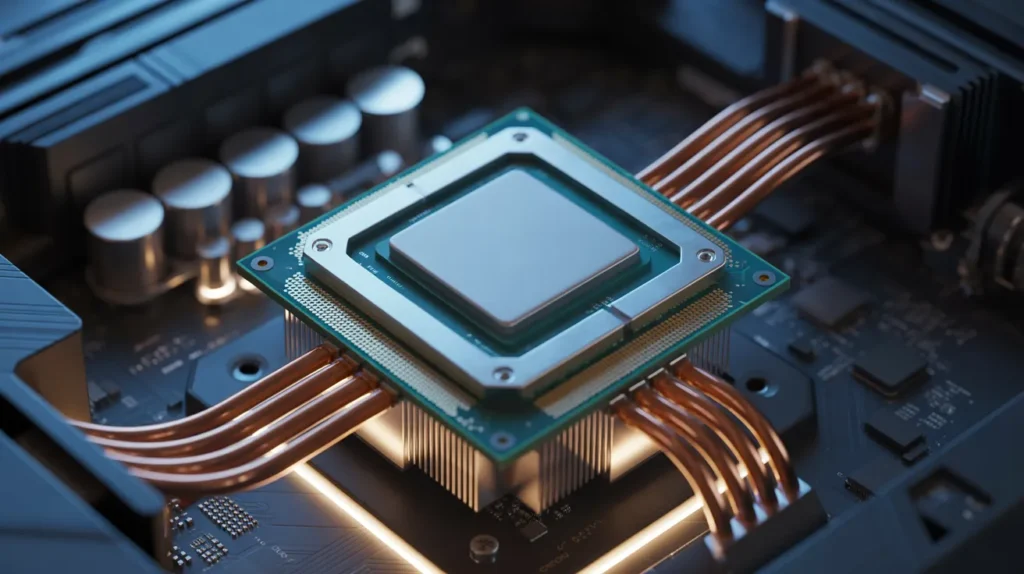
During gaming, the normal CPU package temperature ranges from 60°C to 85°C, depending on the workload, cooling, and room temperature. Poor cooling or overclocking can raise heat levels and trigger thermal throttling, reducing performance.
- CPU Workload: Heavy gaming increases workload, causing higher temperatures.
- Cooling System: Efficient CPU cooling, like air or liquid cooling, ensures optimal temperatures.
- Ambient Temperature: Hotter room temperatures can increase CPU temperature.
- Overclocking: Overclocking elevates power consumption, generating more heat.
- Thermal Paste: Using the proper thermal paste ensures better heat transfer from the CPU to the cooler.
Keeping the CPU temperature within a safe range prevents thermal throttling, ensuring stable gaming performance.
Safe CPU Package Temperature Ranges:
Understanding the safe operating temperature range for your CPU is crucial for maintaining processor performance and ensuring longevity. A CPU’s temperature can vary depending on the workload, cooling system, and ambient temperature. Effectively managing these factors prevents thermal throttling and protects your processor from permanent damage.
| CPU State | Safe Temperature Range | Risk Level |
| Idle | 30°C – 45°C | Low |
| Gaming / Moderate Load | 50°C – 70°C | Normal |
| Heavy Load / Rendering | 70°C – 85°C | Moderate |
| Above 90°C | Unsafe / Throttling | High |
Modern CPUs, such as Intel i7/i9 or Ryzen 7/9, generally have a maximum junction temperature (TJ) between 95°C and 100°C. Exceeding this threshold triggers automatic throttling or a forced shutdown to prevent damage. Proper CPU cooling and monitoring of your processor temperature are essential to avoid overheating and maintain stable CPU performance.
Tips to Reduce High CPU Package Temperature:
High CPU temperatures can significantly impact system performance and longevity. Overheating can cause throttling, crashes, and long-term damage to your hardware. By following a few key steps, you can maintain a stable CPU temperature and ensure smooth system operation.
Effective Ways to Lower CPU Temperature:
- Ensure Proper Ventilation:
Good airflow is vital for cooling. Keep your PC case well-ventilated and add extra fans if needed to maintain optimal temperatures and prevent CPU overheating.
- Regular Dust Cleaning:
Dust buildup can clog your CPU cooler and fans, obstructing airflow and raising temperatures. Use compressed air to clean the dust from your system, especially around the CPU cooler and fans, to maintain proper cooling.
- Reapply Thermal Paste:
Old thermal paste can dry out and lose efficiency. Reapplying quality paste improves heat transfer between the CPU and cooler, lowering temperatures.
- Upgrade Your Cooling System:
Stock coolers may struggle under heavy loads. Upgrading to liquid or high-performance air cooling offers improved heat dissipation and enhanced stability.
- Optimize CPU Settings:
Sometimes, reducing the CPU’s power consumption can help lower temperatures. Underclocking your CPU or adjusting the voltage settings in the BIOS can minimize heat production during intense tasks.
- Monitor CPU Usage:
High CPU usage can cause temperature spikes. Use monitoring software like Task Manager or HWMonitor to keep an eye on your CPU usage & close unnecessary background applications to ensure that your CPU is not under excessive load.
- Control Room Temperature:
Room temperature affects CPU cooling efficiency. A warm environment makes it harder to keep the CPU cool, so maintaining a cooler room or using an air conditioner helps improve overall system performance.
By following these steps, you can significantly reduce your CPU’s temperature, resulting in a more stable and high-performance system. Proper CPU cooling management ensures your hardware remains safe and performs optimally for an extended period.
Also Read: How Much Power Does A Cpu Consume
Conclusion:
Maintaining a safe CPU package temperature is essential for stable gaming, rendering, and everyday PC use.
With good cooling, fresh thermal paste, and clean airflow, you’ll avoid throttling and extend your processor’s life for years.
FAQ’s:
1. Does CPU package temperature affect performance?
Yes, high temperatures trigger thermal throttling, which lowers CPU speed and reduces performance.
2. What’s a safe CPU package temperature?
Most CPUs perform best between 30°C–70°C (86°F–158°F). Beyond 90°C (194°F), throttling or shutdown can occur.
3. Can I monitor CPU package temperature using software?
Yes, free tools like HWMonitor, CoreTemp, and NZXT CAM show real-time CPU temperature data.
4. Is 80°C (176°F) safe for gaming?
Yes, temporarily, but sustained temps above 85°C (185°F) indicate you need better cooling or airflow.
5. How can I reduce high CPU temperatures?
Improve airflow, clean dust, apply thermal paste, and use an efficient cooler or liquid cooling setup.

